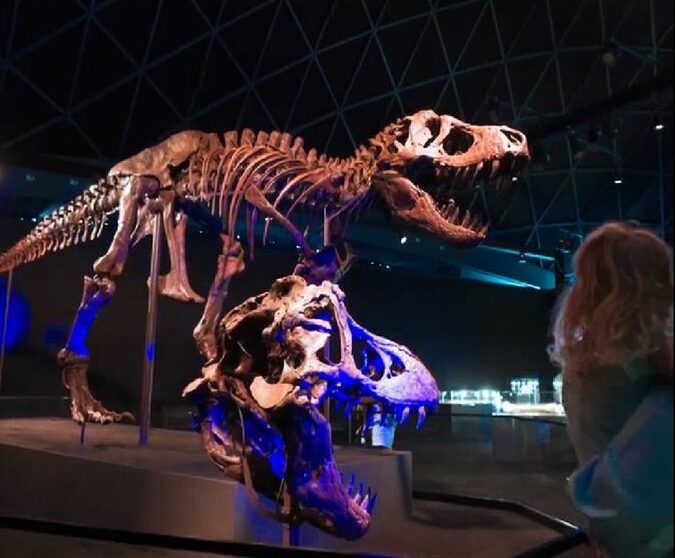The Natural History Museum in Abu Dhabi is set to open in 2025, according to the Abu Dhabi Department of Culture and Tourism. With the exception of Lebanon, which has its own marine and wildlife museum, the new exhibit will be the first of its sort in the Gulf region and the Arab world.
The museum will be located on the tourist island of Saadiyat, about 500 meters (1,640 feet) from the coast of Abu Dhabi.
The highlight of the exhibition was a 39-feet-long fossilized Tyrannosaurus rex, nicknamed Stan after Stan Sacrison, a fossil hunter who made the initial discovery of the T. rex bone fragments in 1987.
The Natural History Museum will be a research and scientific institution and a leading educational center on the evolution of our planet. It aims to build a lasting passion for the natural world among visitors of all ages.
The museum will host a world-class scientific research center that will conduct studies in the fields of zoology, entomology, paleontology, marine biology, molecular research, including genomics and proteomics, and earth sciences.
The research center also aims to enhance and develop knowledge by providing an understanding of the past and innovation for the future, based on the latest technologies.
The museum will attract thousands of tourists to Abu Dhabi, specifically to Saadiyat Island, which along with Baniyas Island, are among the most prominent tourist islands in the emirate.
An area of more than 35,000 square meters (8.6 acres) has been allocated for the museum in the center of Saadiyat Island, which is an internationally renowned art hub.
The museum project is supervised by the architecture firm Mecanoo, a long-standing Dutch firm founded by Francine Houben in Delft, the Netherlands.








